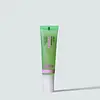What's inside
What's inside
 Key Ingredients
Key Ingredients

 Benefits
Benefits

 Concerns
Concerns

 Ingredients Side-by-side
Ingredients Side-by-side

Water
Skin ConditioningPropanediol
SolventButylene Glycol
HumectantSalicylic Acid
MaskingNiacinamide
SmoothingSodium Polyacrylate
AbsorbentMelaleuca Alternifolia Leaf Oil
AntioxidantBarosma Betulina Leaf Extract
PerfumingSalix Alba Bark Extract
Astringent4-Terpineol
MaskingXanthan Gum
EmulsifyingMethylpropanediol
SolventCitric Acid
BufferingSodium Benzoate
Masking1,2-Hexanediol
Skin ConditioningCaprylyl Glycol
EmollientPotassium Sorbate
PreservativeSodium Gluconate
Skin ConditioningAminomethyl Propanol
BufferingWater, Propanediol, Butylene Glycol, Salicylic Acid, Niacinamide, Sodium Polyacrylate, Melaleuca Alternifolia Leaf Oil, Barosma Betulina Leaf Extract, Salix Alba Bark Extract, 4-Terpineol, Xanthan Gum, Methylpropanediol, Citric Acid, Sodium Benzoate, 1,2-Hexanediol, Caprylyl Glycol, Potassium Sorbate, Sodium Gluconate, Aminomethyl Propanol
Water
Skin ConditioningMandelic Acid
AntimicrobialSodium Hydroxide
BufferingSalicylic Acid
MaskingPalmitoyl Pentapeptide-4
Skin ConditioningSodium Polyacrylate
AbsorbentPhenoxyethanol
PreservativeZinc PCA
HumectantHydroxyethylcellulose
Emulsion StabilisingCitric Acid
BufferingGlycerin
HumectantSodium Gluconate
Skin ConditioningEthylhexylglycerin
Skin ConditioningBiosaccharide Gum-1
HumectantSodium Levulinate
Skin ConditioningGlyceryl Caprylate
EmollientHydrolyzed Caesalpinia Spinosa Gum
AbsorbentSodium Anisate
AntimicrobialAlcohol
AntimicrobialCaesalpinia Spinosa Gum
Skin ConditioningSodium Benzoate
MaskingPotassium Sorbate
PreservativeWater, Mandelic Acid, Sodium Hydroxide, Salicylic Acid, Palmitoyl Pentapeptide-4, Sodium Polyacrylate, Phenoxyethanol, Zinc PCA, Hydroxyethylcellulose, Citric Acid, Glycerin, Sodium Gluconate, Ethylhexylglycerin, Biosaccharide Gum-1, Sodium Levulinate, Glyceryl Caprylate, Hydrolyzed Caesalpinia Spinosa Gum, Sodium Anisate, Alcohol, Caesalpinia Spinosa Gum, Sodium Benzoate, Potassium Sorbate
Ingredients Explained
These ingredients are found in both products.
Ingredients higher up in an ingredient list are typically present in a larger amount.
Citric Acid is an alpha hydroxy acid (AHA) naturally found in citrus fruits like oranges, lemons, and limes.
Like other AHAs, citric acid can exfoliate skin by breaking down the bonds that hold dead skin cells together. This helps reveal smoother and brighter skin underneath.
However, this exfoliating effect only happens at high concentrations (20%) which can be hard to find in cosmetic products.
Due to this, citric acid is usually included in small amounts as a pH adjuster. This helps keep products slightly more acidic and compatible with skin's natural pH.
In skincare formulas, citric acid can:
While it can provide some skin benefits, research shows lactic acid and glycolic acid are generally more effective and less irritating exfoliants.
Most citric acid used in skincare today is made by fermenting sugars (usually from molasses). This synthetic version is identical to the natural citrus form but easier to stabilize and use in formulations.
Read more about some other popular AHA's here:
Learn more about Citric AcidPotassium Sorbate is a preservative used to prevent yeast and mold in products. It is commonly found in both cosmetic and food products.
This ingredient comes from potassium salt derived from sorbic acid. Sorbic acid is a natural antibiotic and effective against fungus.
Both potassium sorbate and sorbic acid can be found in baked goods, cheeses, dried meats, dried fruit, ice cream, pickles, wine, yogurt, and more.
You'll often find this ingredient used with other preservatives.
Learn more about Potassium SorbateSalicylic Acid (also known as beta hydroxy acid or BHA) is a well-known ingredient for treating skin that struggles with acne and clogged pores. It exfoliates both the skin's surface and deep within the pores to help clear out buildup, control oil, and reduce inflammation.
Unlike AHAs (alpha hydroxy acids), salicylic acid is oil-soluble. This allows it to penetrate into pores which makes it especially effective for treating blackheads and preventing future breakouts.
Salicylic acid is also known for its soothing properties. It has a similar structure to aspirin and can calm inflamed or irritated skin, making it a good option for acne-prone skin that is also sensitive.
Concentrations of 0.5-2% are recognized by the U.S. FDA as an over-the-counter topical acne product.
It can cause irritation and/or dryness if one's skin already has a compromised moisture barrier, so it's best to focus on repairing that before introducing this ingredient into your routine.
While salicylic acid does not increase sun sensitivity, it’s still important to wear sunscreen daily to protect your skin.
If you are looking for the ingredient called BHA or Butylated Hydroxyanisole, click here.
Learn more about Salicylic AcidSodium Benzoate is a preservative. It's used in both cosmetic and food products to inhibit the growth of mold and bacteria. It is typically produced synthetically.
Both the US FDA and EU Health Committee have approved the use of sodium benzoate. In the US, levels of 0.1% (of the total product) are allowed.
Sodium benzoate works as a preservative by inhibiting the growth of bacteria inside of cells. It prevents the cell from fermenting a type of sugar using an enzyme called phosphofructokinase.
It is the salt of benzoic acid. Foods containing sodium benzoate include soda, salad dressings, condiments, fruit juices, wines, and snack foods.
Studies for using ascorbic acid and sodium benzoate in cosmetics are lacking, especially in skincare routines with multiple steps.
We always recommend speaking with a professional, such as a dermatologist, if you have any concerns.
Learn more about Sodium BenzoateThis is the synthetic salt of gluconic acid, a form of PHA and mild exfoliant.
It is mainly used to stabilize oil and butter formulations from going bad. Sodium gluconate is a humectant, pH regulator, and chelating agent.
Chelating agents help neutralize unwanted metals from affecting the formulation.
Sodium gluconate is water-soluble.
Learn more about Sodium GluconateSodium Polyacrylate is the sodium salt of polyacrylic acid. It is used as an absorber, emollient, and stabilizer.
This ingredient is a super-absorbent polymer - meaning it can absorb 100 to 1000 times its mass in water. As an emollient, Sodium Polyacrylate helps soften and soothe skin. Emollients work by creating a barrier to trap moisture in. This helps keep your skin hydrated.
Water. It's the most common cosmetic ingredient of all. You'll usually see it at the top of ingredient lists, meaning that it makes up the largest part of the product.
So why is it so popular? Water most often acts as a solvent - this means that it helps dissolve other ingredients into the formulation.
You'll also recognize water as that liquid we all need to stay alive. If you see this, drink a glass of water. Stay hydrated!
Learn more about Water